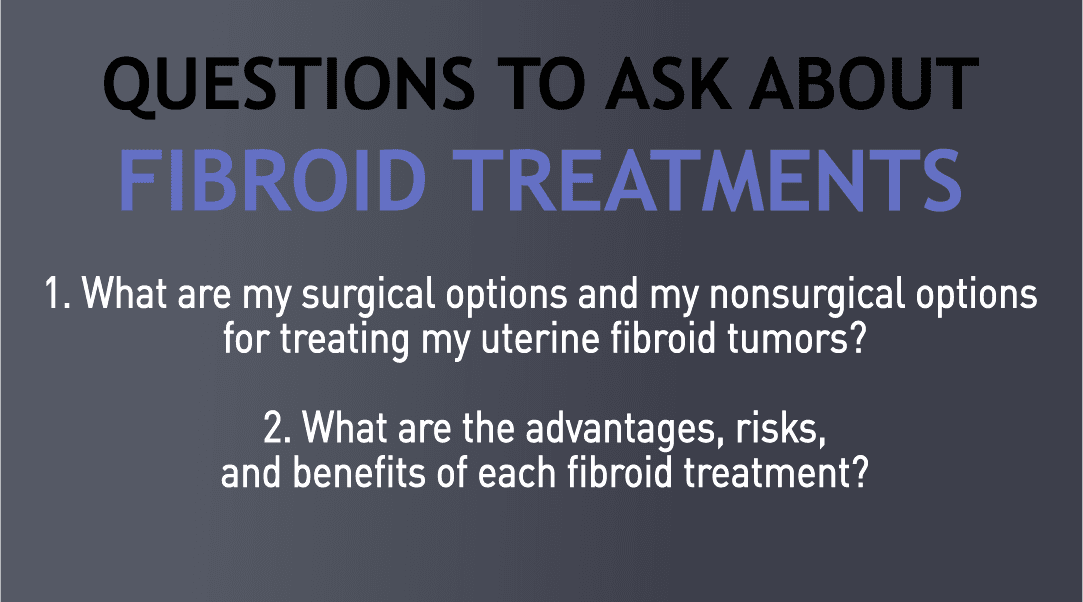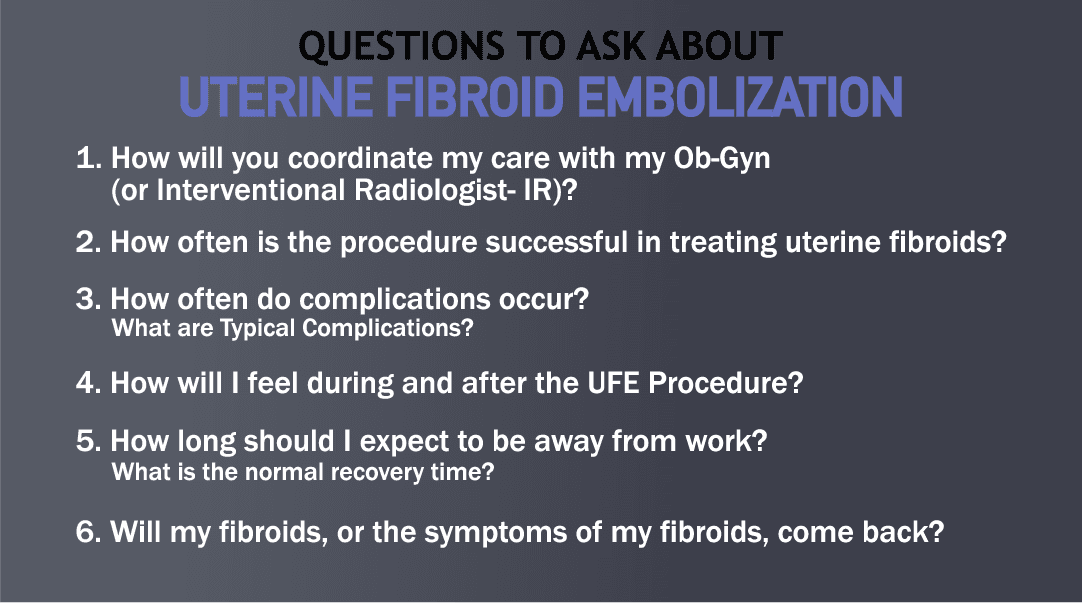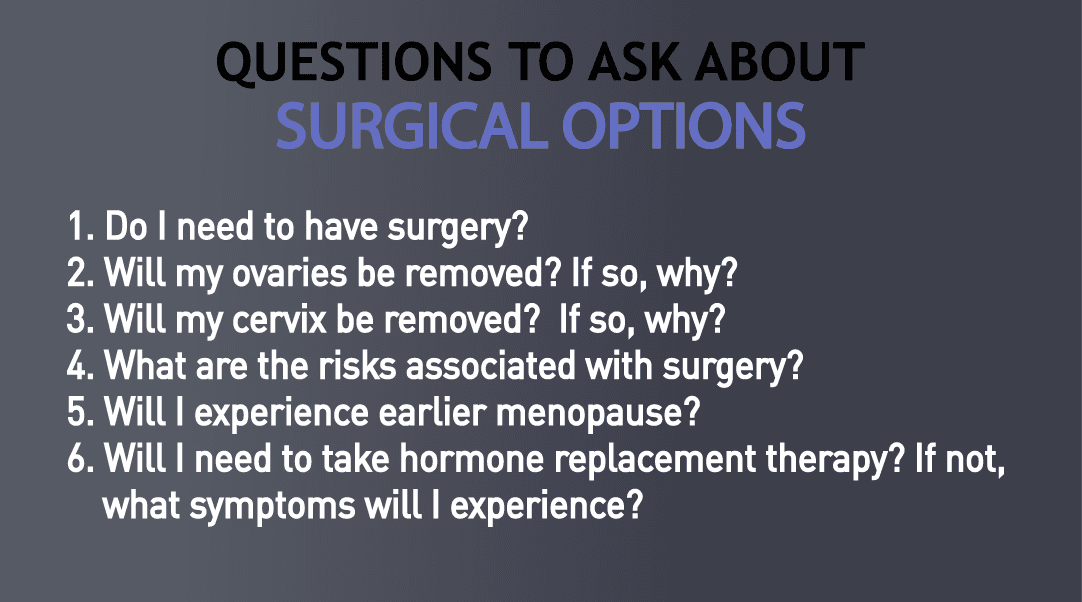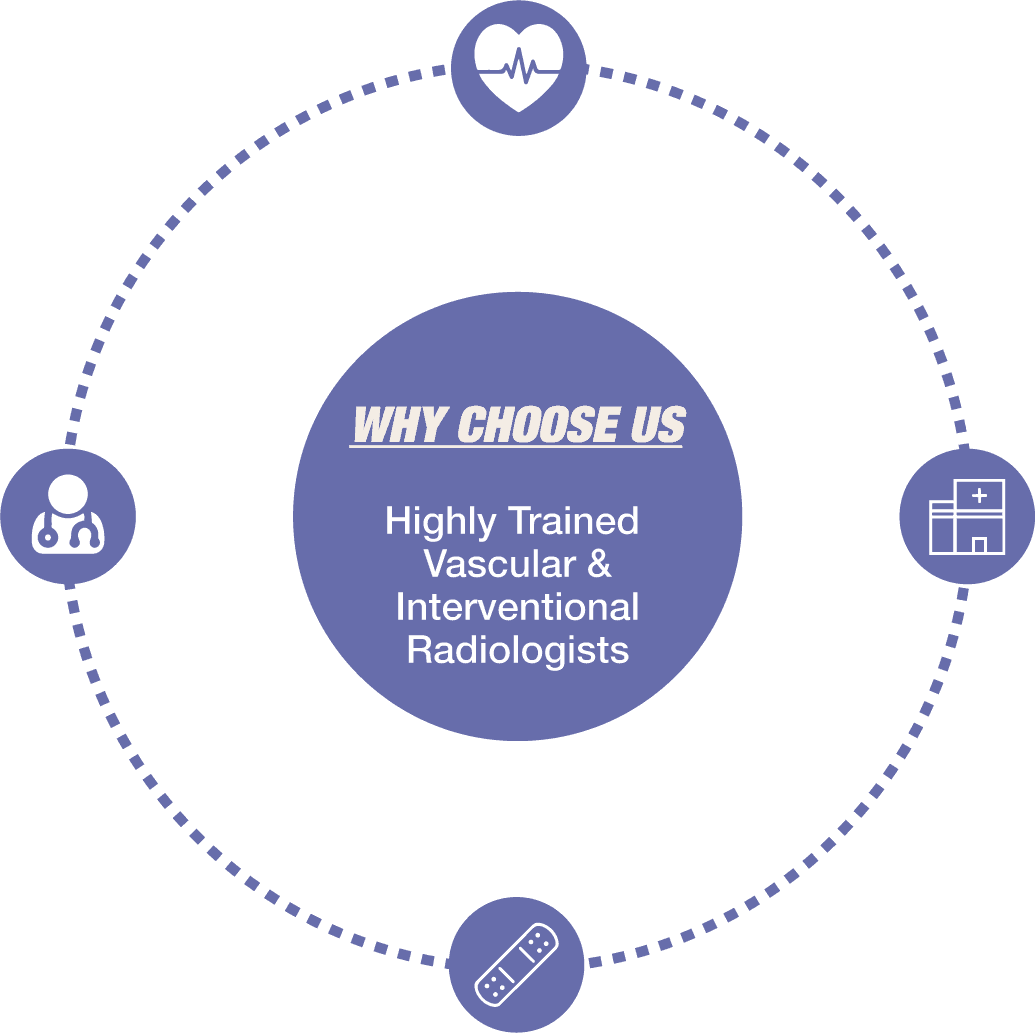


Uterine fibroid embolization (UFE), also known as uterine artery embolization (UAE), is a minimally invasive option that preserves the uterus and greatly reduces recovery
times compared to surgical procedures.
UFE blocks the blood supply to fibroids, causing them to shrink.
- About 85-90% of women have significant relief or total resolution of fibroid symptoms such as heavy bleeding, pain or pressure, and other fibroid-related problems.
- Recurrence of fibroids following UFE is rare.
- UFE is performed by an interventional radiologist (IR), a doctor who uses X-rays and other imaging techniques to see inside the body and treat conditions without surgery.
- During UFE, the patient is kept comfortable with sedation and pain medication.
- The IR inserts a thin tube through a small incision in the skin of the groin.
- The small tube (catheter) is placed into the femoral artery and tiny microscopic particles (Embospheres®) are injected into the uterine arteries supplying blood to the uterus and to the fibroids.
- The tiny particles injected into the arteries supplying the uterus starve the fibroids of the nutrients they need to grow.
- Over the next several months, the fibroids shrink and die.
The uterine fibroid embolization procedure generally takes about an hour in the interventional radiology room. When required, hospital stay is usually only one night during which the patient will receive pain medication and other drugs to treat any pain and cramping associated with the procedure. The patient is discharged with pain and anti-inflammatory medications. Most women resume light activity within a few days and return to work in 7 to 10 days.
Patient who are an ideal candidate for UFE include women who:
- Have symptomatic fibroids
- Do not intent to get pregnant in the future
- Want to keep their uterus
- Do not want surgery
- Want a faster recovery time
- May not be a good candidate for surgery.
While there are reports of women becoming pregnant after uterine fibroid embolization (UFE) and having successful pregnancies, there are no large definitive scientific study results establishing the safety of UFE on fertility and pregnancy. As with any medical intervention, you should discuss the most current clinical data before deciding on the fibroid treatment that is right for you.
We will be glad to schedule an appointment with
one of VIRA’s interventional radiologists
one of VIRA’s interventional radiologists
to determine if UFE is the best option for you.
478-757-8868
Take Our UFE Assessment



OTHER FIBROID TREATMENT OPTIONS
click to learn more:




